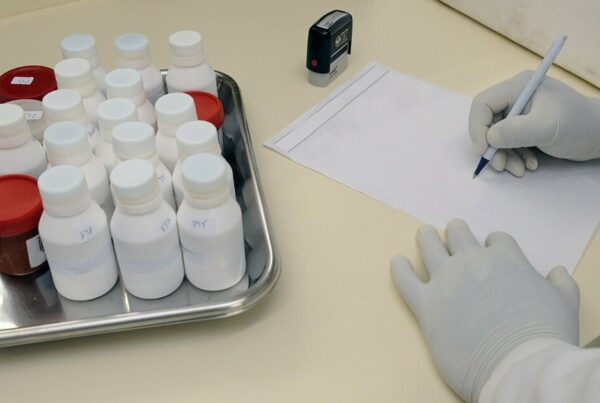Automation in clinical trials is the process of automating the execution of clinical trials using software programs or computer equipment to assist researchers and patients.
It helps in reducing time spent on monotonous tasks and increasing productivity by automating many processes of conducting clinical trials.
These processes include patient enrolment, data collection, analysis, reporting, and other tasks relating to clinical trial management. Clinical trial automation is implemented by adopting cloud computing, artificial intelligence, and big data as tools to accomplish its goals and objectives. But what are the benefits of clinical trials automation?
Straight off the bat, here are some key takeaways:
- Clinical trial automation can save time, improve accuracy, and reduce risks.
- It can be implemented using cloud computing, AI, and big data.
- The implementation of clinical trial automation should be carefully planned.
- Clinical trial automation is still in its early stages of development, but it is becoming increasingly popular.
Automation in Clinical Trials: Key Benefits
There are many benefits of clinical trials automation. With proper implementation, your company can experience fewer errors and delays, improved data accuracy and consistency, reduced risks, streamlined workflows, and optimized resource allocation.
Save time and resources by automating tasks
When set up properly, clinical trials automation software can provide easy-to-use functionality to save trial participants time and ensure they access important documents without hassle. Many aspects of clinical trials can be automated – from data entry to document retrieval. You can automate follow up emails if a patent has not completed a survey or as reminders for an upcoming appointment.
Improve data accuracy and consistency while reducing the risk of human error
By automating clinical trial processes, trial sponsors can be sure that they are getting accurate and consistent data. The risk of human error is greatly reduced when using automation tools because they can use validation methods to ensure incoming data meets the specified formatting criteria.
Increase clinical trial efficiency and effectiveness
Once set up properly, clinical trials automation software can help trial sponsors and other trial stakeholders connect seamlessly. Furthermore, it can ensure that patients participating in a clinical trial receive all their documentation promptly.
In short, automation can make it easier for your participants to engage in your clinical trials and enable them to complete their tasks quickly and easily. Researchers can quickly increase their patient pool when needed and automatically move them into the established flow. A trial may start with a few hundred participants to test their automation processes and be able to scale up when needed.
Improve communication between different stakeholders involved in a clinical trial
Research shows that using automation in clinical trials helps reduce errors and delays. Through robotic process automation, clinical trial technology can assist with compliance reporting (which is important for regulators) and information management.
Quickly creating and distributing reports for the study is essential for keeping it moving smoothly while keeping the stakeholders up to date. Keeping key stakeholders informed with automatic reporting can help keep researchers focused on patients instead of writing regular reports for stakeholders.
Why is There a Need for Robotic Process Automation in Clinical Trials?
The Complexity & Cost of Clinical Trials
The process of clinical trials is long, complicated and often very resource intensive. To manage these costs and timelines, many organizations are turning to robotic process automation clinical trials (RPA). RPA is a form of automation that can help speed up the clinical trial process by automating repetitive tasks.
Advantages of Using RPA in Clinical Trials
This can free up resources so that they can be used for other aspects of the trial, such as patient recruitment or data analysis. Additionally, RPA can help improve the accuracy of data by reducing human error. There are many benefits to using RPA in clinical trials, but there are also some aspects that cannot be automated.
Automation Beyond Clinical Trials
Today, automation is being applied to everything from restaurant kitchens to fighter jets. While people are just starting to get used to it in some areas, robotic process automation clinical trials is already well on its way. Research has shown that increased automation in clinical trials can significantly reduce the length of time it takes to complete research while still producing high quality results (Garland).
However, there may be participants in your trial that your staff will need to interact with outside of the automation. If your participant base includes people who do not have a steady access to the Internet or are otherwise unable to use a computer or smart phone, your staff may need to assist them.
They may prefer to come in to interact with someone face to face rather than fill out a form online. Take into consideration your participant pool before attempting to automate all of your clinical trial processes, you may need to use email or text based automation instead of having a user log into a portal or have a way for patients to reach out directly via phone.
Companies like Mosio can help your clinical trial team with pre-screening potential participants, sending automated surveys via text message to the patients, and gathering patient feedback. Mosio also has the ability to integrate with data collection and analysis tools to help you get results.
How is AI Used in Clinical Trials?
Data Processing & Pattern Recognition
AI is used in clinical trials to help automate the process of data collection and analysis. This can help save time and resources by reducing the need for manual input and analysis. Additionally, AI can help identify patterns and trends that may not be apparent to humans. AI is able to process large amounts of data quickly and accurately without human intervention, which helps speed up research while also improving accuracy.
Enhancing Patient Recruitment & Diagnostics
Many aspects of clinical trials can be automated with AI or supported by AI. This includes patient recruitment, identification and consent, as well as medical diagnostics such as lab tests and MRI scans.
The Role of Robotics in Lab Precision
The use of robotics in laboratories also allows for precision-based automation which improves quality control standards across all studies being conducted at any given time.
For example, robotic devices are able to perform tasks like pipetting precisely without risk of human error or contaminating samples. Such precise tasks allow for more accurate measurements in research studies, which ultimately means less wasted effort and more accurate findings.
Safety & Risk Reduction in Trials
The use of AI-powered robots in clinical trials also helps to reduce risks and save lives by reducing exposure to harmful chemicals and biological materials. Robots are able to perform tasks more effectively and accurately than humans, which reduces contamination risk. This is especially useful when working with toxic materials such as radioactive isotopes or extremely potent chemicals like those used in drug production.
Predictive Analytics & Outcome Forecasting
Some AI-powered systems can also be used to predict outcomes of clinical trials. For example, certain algorithms can track and compare individuals who have been exposed to certain drugs or lab tests to those who haven’t. This data can be used to produce predictions about how effective a drug or treatment is likely to be in a general population.
What Can Be Done To Increase Efficiency In Clinical Trials?
The use of clinical trial automation is one way to help increase efficiency in clinical trials. By automating various aspects of the clinical trial process, sponsors and CROs can save time and resources. In addition, automating clinical trials can help improve communication between site staff and patients. You may be able to send out a text or email to your patients with a link to a portal for them to see their test results earlier than their next visit.
Here are some specific ways that clinical trial automation can help to increase efficiency in clinical trials:
- Patient Recruitment – You can automate patient recruitment using software to send out emails to a participant pool with a survey to begin filtering potential participants. Using surveys will allow you to make sure that all participants fall within the criteria needed for your study. To continue your outreach, you can use online forums and social media to communicate directly with potential patients about participating in your trial.
- Clinical Trial Documentation – Using email or text messaging, you can digitally send forms for your participants to fill out without having to come into your facility. These forms will also be available to your patients any time they need them without having to call into the facility to have a copy sent to them.
- Automated Allocation – For many studies, multiple pools of patients will be required. There may be a human bias in splitting the patients if done manually. If done with randomized automation, patients can be split into pools without a human bias.
- Data Collection – Using a computer system to collect patient data rather than hand-written paper forms will greatly increase efficiency in clinical trials. This type of clinical trials automation allows for more efficient data collection and recording and accurate tracking of when information is sent to site staff and CROs.
- Follow-Ups – Automated reminders can be sent to patients at specific time intervals. These follow-up messages can remind patients of upcoming appointments or tests or remind them to take medications. These features are often included in clinical trial automation software and can help to ensure that patients remain engaged throughout the trial process.
- Communication Between Site Staff and Patients – Besides helping with trial efficiency and quality control processes, software aims to improve communication between site staff and patients. For example, if a patient has a question about their appointment schedule, they can simply contact your company using their smartphone or computer rather than calling staff directly.
Automating Clinical Trials: Pros & Cons
Automating clinical trials has many benefits that can save time and resources. One of the main benefits is that it can help to speed up the process by automating tasks that would otherwise be done manually. This can free up staff to focus on other aspects of the trial, and it can also help to improve accuracy and consistency.
Additionally, automating clinical trials can help to reduce costs by eliminating the need for paper records and lowering the risk of human error. However, there are also some drawbacks to automating clinical trials.
One of the drawbacks to clinical trial automation is that it can be expensive to develop and implement an automated system for clinical trials, and not all companies will have access to or be able to afford such a system.
Another drawback is that in some cases, automation isn’t suitable for certain aspects of clinical trials, such as record-keeping tasks or complex patient interactions. Integrating different software systems into one automated platform may also be difficult.
Overall, many benefits to automating clinical trials can outweigh the drawbacks. It can help speed up processes and improve accuracy, consistency, and cost-effectiveness, making it an attractive option for organizations of all sizes. While it may not be feasible for every company, there are still some opportunities to implement automated systems in clinical trials.
Some companies invest in partial automation, while others employ a completely paperless system. In addition to improving performance and efficiency, these systems can greatly benefit patients by providing clear information and reducing stress levels.
Investing in clinical trials automation can be a big decision for companies, and it may not be suitable for every organization. It’s important to weigh up your options and determine whether or not it will have a positive impact on your business. However, when implemented correctly, automated systems can save time and resources while improving patient care.
Challenges That Can Arise Due To The Lack Of Automation
Without adequate automation for clinical trials, there can be errors in data collection, analysis, and reporting that can affect the end results. Additionally, it can result in delays in getting results to sponsors and patients. Using automation can help you validate data and create regular reports for sponsors to keep all stakeholders up to date throughout the trial.
Another challenge is the high cost of clinical trials. This is due in part to the need to pay for staff and facilities to see all patients in a trial whenever there is a need to collect information. By having patients fill out surveys from home and use video call, email, or text messaging to communicate with them, you can reduce the number of times your participants need to come into your facility.
Finally, the efficiency of recruiting patients for clinical trials can be improved with automation. Your team can send out a survey or series of surveys to filter through a large pool of potential participants to find the ones that meet your study’s requirements. Follow up surveys can continue to filter the participants to make sure all the requirements of your study are fulfilled.
In recent years, however, many of these challenges have been alleviated thanks to a range of innovative technologies such as patient-facing websites to collect patient recruitment data for study participation survives. Sites like these make registration collection easier since the participants can enter their information directly instead of staff having to reach out to them.
They can also inform participants when new trials open up in their area and send an email out to the potential participant base that has signed up to the website to le them know about new opportunities.
Another technology that has led to an increase in clinical trial efficiency is tablet and smartphone apps that allow for remote monitoring of patients during trials. With such platforms, trial administrators can view all study data from any location at any time, allowing them to effectively manage their clinical studies no matter where they are in the world.
Clinical trials automation is leading to a number of other improvements in clinical trial procedures. For example, many pharmaceutical companies are beginning to use artificial intelligence to assist with the analysis of clinical trial data.
By using these tools, trial administrators can analyze large volumes of data more quickly than ever before and publish their results quicker allowing new, safe treatments to be made available to those in need.
Can Clinical Trials Automation Be Reused For Other Studies?
Clinical trial automation can be reused for other studies with some considerations. It can be helpful to use automation for all phases of a clinical trial to keep the conditions in each phase the same.
When deciding whether or not to reuse automation for another study, you will need to make sure that there are no major differences between it and your new study. You may need to reprogram and adjust your software if you do find any major differences.
If you’re considering reusing some automation from one trial for a completely different trial, not just a different phase of a trial, you may be able to reuse some of the basic patient intake forms or patient pool filtering surveys with minimal changes. While any trial specific automation may need to be changed dramatically, if you’re using the same team to run the trial they will already be familiar with the automation tools and can set up the new automation quickly.
Overall, clinical trial automation helps to save time and resources, while also improving data quality and accuracy. Reusing it where applicable will help get your clinical trial running quickly and efficiently without having to start from square one.
Using clinical trials automation to help increase efficiency in clinical trials can help you reduce costs and resources and improve quality control. Additionally, automating your trial’s various aspects can help improve communication between site staff and patients.









